When it comes to Mars exploration, NASA has more success than any other agency. This week, they’ll attempt to land another sophisticated rover on the Martian surface to continue the search for evidence of ancient life. The Mars Perseverance rover will land on Mars on Thursday, February 18th, and it’s bringing some very ambitious technologies with it.
Continue reading “NASA’s Perseverance Rover: The Most Ambitious Space Mission Ever?”A Comet’s Tale – Rosetta’s Philae, Five Days from Touchdown
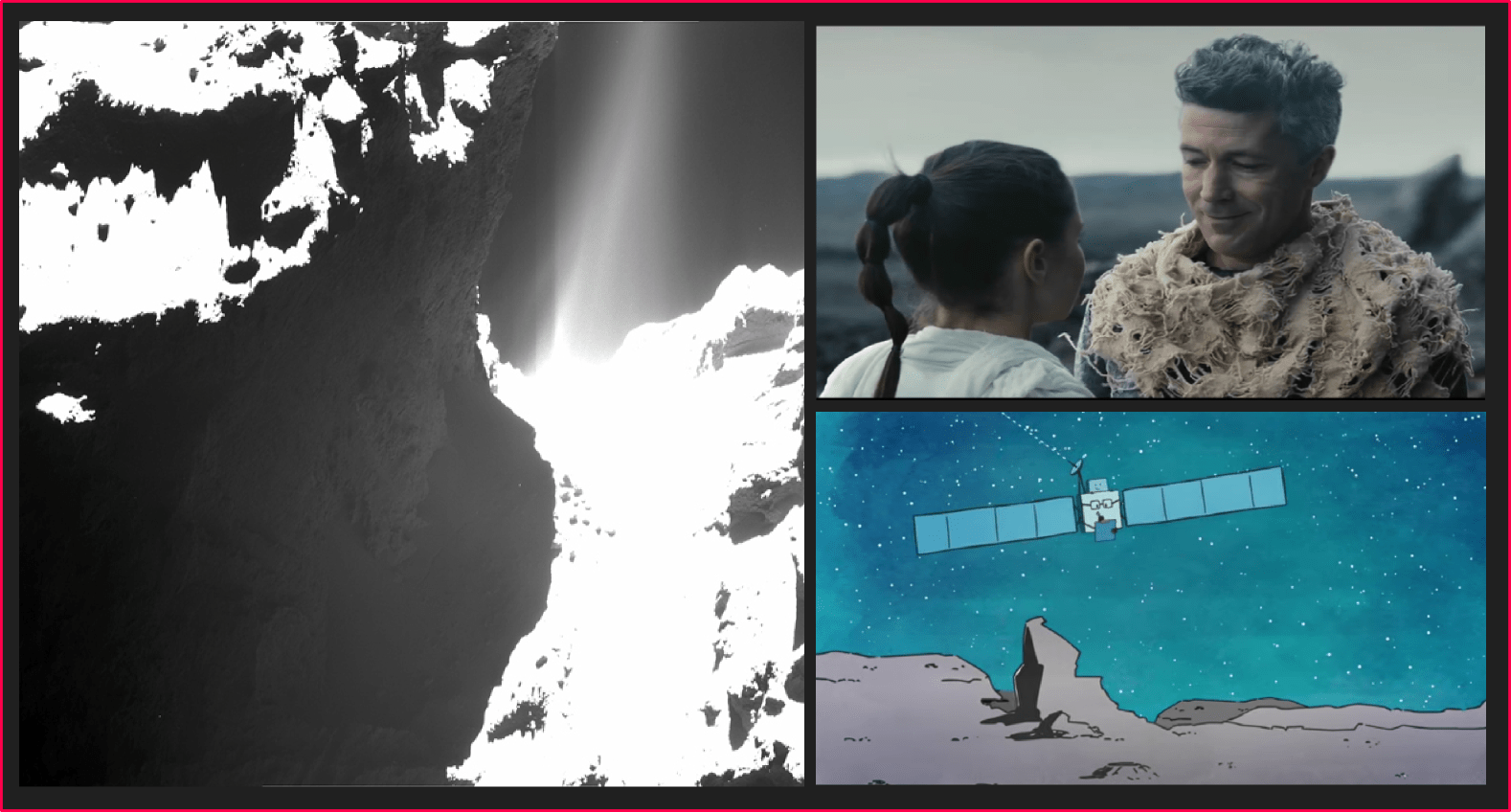
In the recently released Rosetta short film called “Ambition”, the master begins a story to his apprentice – “Once upon a time.” The apprentice immediately objects to his triteness. But he promises that it is worth the slight tribulation. Who could have imagined ten years ago that Rosetta would become so successful in two such contrasting approaches to telling a tale.
The Rosetta mission is part franchise and part scientific mission. In five days, Rosetta will reach a crossroad, a point of no return as epic as moments in Harry Potter or Lord of the Rings. A small mindless little probe called Philae will be released on a one-way trip to the surface of a comet. Win or lose, Philae will live on in the tale of a comet and a mission to uncover the mysteries of our planet’s formation.
ESA did not promise a good mission as Aidan Gillen promises a good story in Ambition. A space mission is never put in terms of a promise but rather it is thousands of requirements and constraints that formulate a mission plan and a spacecraft design. The European Space Agency put 1 billion Euros ($1.3 billion) to work and did so in what now looks like one of the greatest space missions of the first century of space exploration.
The Rosetta mission is actually two missions in one. There is the comet chaser, the orbiter – Rosetta and then the lander Philae. The design of Rosetta’s objectives is some part, probably in large part, was conceived by dismissing the presence of Philae. Make a space probe to a comet that just orbits the small body. Select your scientific instrumentations accordingly. Now add a small lander to the mission profile that will do something extraordinary – what Rosetta cannot do with its instrumentation. Finally, make sure that Rosetta has everything needed to support Philae’s landing on a comet.
Here is what they have as the game plan on November 12th (the sequence of events begins while its still November 11th in the Americas). These two times are absolutely non- trivial. They are finely tuned to a timepiece called 67P/Churyumov–Gerasimenko. If calculations were made in error, then Philae’s ultimate fate is unknown. Start exactly on time and Philae will be given the best chance at making a successful touchdown on the comet.
Separation of Philae from Rosetta: 09:03 GMT (10:03 CET)
Touchdown on the comet: 16:02 GMT (17:02 CET).
During this time, comet 67P/Churyumov–Gerasimenko will complete over half a rotation on its axis. To be exact, it will rotate 56.2977% of a full rotation. Comet 67P will have its back turned towards Rosetta as it holds the diminutive Philae for the last time and releases Philae for the first and only time.
Now that the ESA, with help from the graphic artists from Platige Image from Poland, has released something entertaining for the science fiction minded among us, they have again released a next episode in their children’s fable of Rosetta and Philae (video below). This cartoon of the final moments of Rosetta and Philae together preparing for the descent which could well be the final moments of Philae.
Philae could fail, crack like an egg on a sharp rock or topple over a cliff or into a crevasse on the surface of 67P. What happens to Philae will make for a Grimm’s fairy tale ending or something we would all prefer. In either case, the ESA is using graphic arts and storytelling to inspire the next generations to join in what our JFK called “great adventures of all time” [ref].
Through a contest something NASA and JPL have used several times to involve the public, the ESA asked the public to come up with a name for the landing site, site J. Out of the thousands of entries, 150 people suggested the name Agilkia [ref]. Alexandre Brouste from France, the designated winner, has been invited to watch the landing activities at Rosetta’s mission control in Darmstadt, Germany. It follows from the Eqyptian theme of the mission’s two probes. “Rosetta” comes from the clay tablet discovered in the 1800s that led to the deciphering of Egyptian hieroglyphics. Philae” is a island on the Nile which held magnificent Eqyptian temples. With the operation of the Aswan dam starting in 1902, the island of Philae was repeatedly flooded and the temple was at risk. UNESCO beginning in 1960 started a project to save the islands historic structures. They were all moved to a nearby Nile island called Agilkia [related U.T. article]. This becomes a part of the Rosetta story – a lander named Philae in reference to the obelisks used along with the Rosetta stone to decipher Eqyptian writings, departing its mother ship on a short but critical voyage to a final resting place, the landing site now called Agilkia.
Upon landing, a landing confirmation signal is expected from Philae via Rosetta at about 8:02 AM PST (11:02 AM EST, 17:02 Central European Time). Alexandre Brouste of France, the designated winner of the landing site naming contest will be in Darmstadt, Germany in mission control to watch the landing unfold with the Rosetta engineers and scientists. Surely, millions of citizens of the European Union and people worldwide will be watching via the World Wide Web.
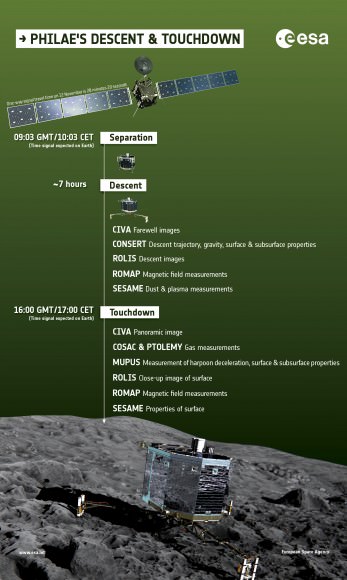
Previous Rosetta and Philae articles at Universe Today
Rosetta’s Philae Lander: A Swiss Army Knife of Scientific Instruments
Why Watch ESA Rosetta’s Movie ‘Ambition’? Because We Want to Know What is Possible
Why Watch ESA Rosetta’s Movie ‘Ambition’? Because We Want to Know What is Possible
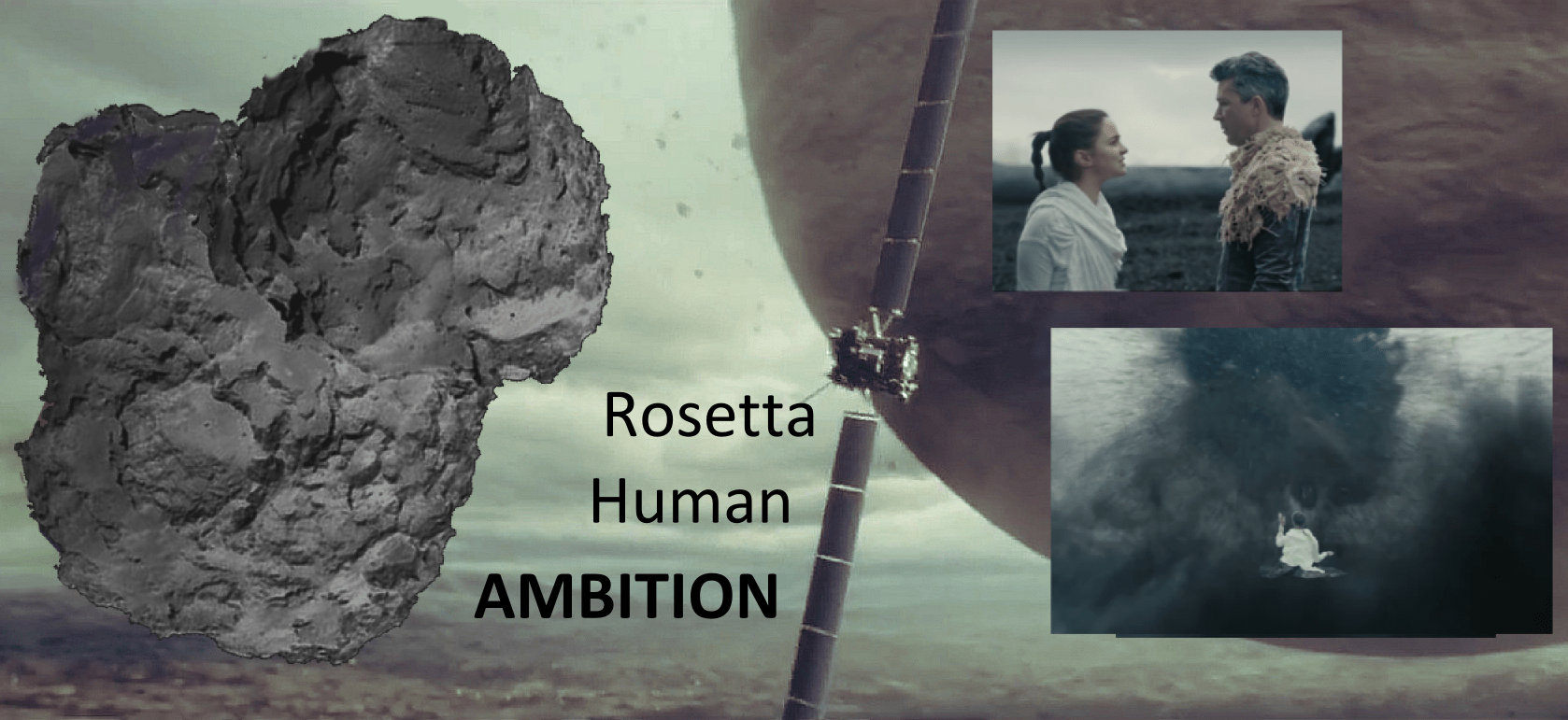
NASA has taken on space missions that have taken years to reach their destination; they have more than a dozen ongoing missions throughout the Solar System and have been to comets as well. So why pay any attention to the European Space Agency’s comet mission Rosetta and their new short film, “Ambition”?
‘Ambition’ might accomplish more in 7 minutes than ‘Gravity’ did in 90.
‘Ambition’ is a 7 minute movie created for ESA and Rosetta, shot on location in Iceland, directed by Oscar-winning Tomek Baginski, and stars Aidan Gillen—Littlefinger of ‘Game of Thrones.’ It is an abstraction of the near future where humans have become demigods. An apprentice is working to merge her understanding of existence with her powers to create. And her master steps in to assure she is truly ready to take the next step.
In the reality of today, we struggle to find grounding for the quest and discoveries that make up our lives on a daily basis. Yet, as the Ebola outbreak or the Middle East crisis reminds us, we are far from breaking away. Such events are like the opening scene of ‘Ambition’ when the apprentice’s work explodes in her face.
The ancient Greeks also took great leaps beyond all the surrounding cultures. They imagined themselves as capable of being demigods. Achilles and Heracles were born from their contact with the gods but they remained fallible and mortal.
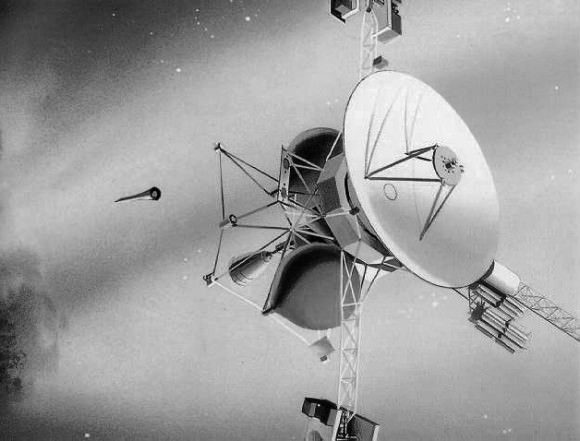
But consider the abstraction of the Rosetta mission in light of NASA’s ambitions. As an American viewing the European short film, it reminds me that we are not unlike the ancient Greeks. We have seen the heights of our powers and ability to repel and conquer our enemies, and enrich our country. But we stand manifold vulnerable.
In ‘Ambition’ and Rosetta, America can see our European cousins stepping ahead of us. The reality of the Rosetta mission is that a generation ago – 25 years — we had a mission as ambitious called Comet Rendezvous Asteroid Flyby (CRAF). From the minds within NASA and JPL, twin missions were born. They were of the Mariner Mark II spacecraft design for deep space. One was to Saturn and the other – CRAF was to a comet. CRAF was rejected by congress and became an accepted sacrifice by NASA in order to save its twin, the Cassini mission.
The short film ‘Ambition’ and the Rosetta mission is a reminder of what American ambition accomplished in the 60’s – Apollo, and the 70s – the Viking Landers, but then it began to falter in the 80s. The ambition of the Europeans did not lose site of the importance of comets. They are perhaps the ultimate Rosetta stones of our star system. They are unmitigated remnants of what created our planet billions of years ago unlike the asteroids that remained close to the Sun and were altered by its heat and many collisions.
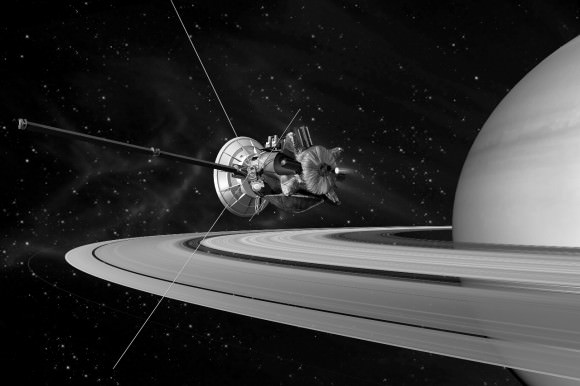
Our cousins picked up a scepter that we dropped and we should take notice that the best that Europe spawned in the last century – the abstract art of Picasso and Stravinsky, rocketry, and jet travel — remains alive today. Europe had the vision to continue a quest to something quite abstract, a comet, while we chose something bigger and more self-evident, Saturn and Titan.
‘Ambition’ shows us the forces at work in and around ESA. They blend the arts with the sciences to bend our minds and force us to imagine what next and why. There have been American epoch films that bend our minds, but yet sometimes it seems we hold back our innate drive to discover and venture out.
NASA recently created a 7 minute film of a harsh reality, the challenge of landing safely on Mars. ESA and Rosetta’s short film reminds us that we are not alone in the quest for knowledge and discovery, both of which set the stage for new growth and invention. America needs to take heed so that we do not wait until we reach the moment when an arrow pierces our heel as with Achilles and we succumb to our challengers.
References:
Rosetta: The Ambition to turn Science Fiction into Science Fact

